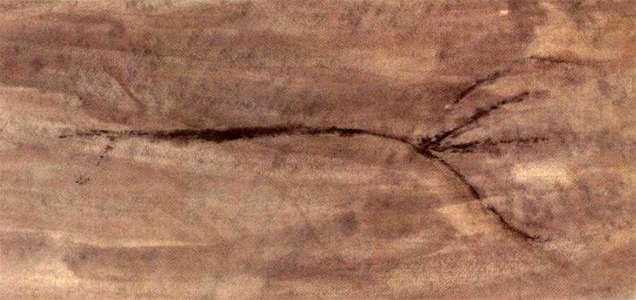Back to Don's Maps
 Back to Archaeological Sites
Back to Archaeological Sites
Cueva del Pindal
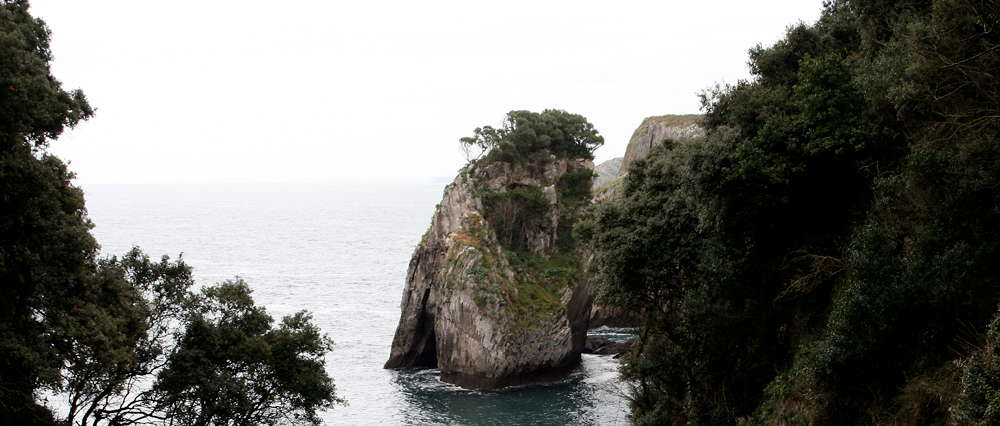
View to the sea from Cueva del Pindal.
Photo: Carolyn Hailstones 2008
Cueva del Pindal is situated near the town of Pimiango near the border of Cantabria. The cave paintings were discovered in 1908 . Most of the cave paintings are located on the right walls of the cave as the visitor enters. Various studies have confirmed the existence of 13 bison, 8 horses, a deer, deer antlers, a mammoth and other unrecognisable figures. There are also abundant red marks such as dots, lines, parallel lines and claviform figures. The cave is open to the public throughout the year, closed Monday and Tuesday, and Wednesday visits are free.
Text above adapted from Wikipedia
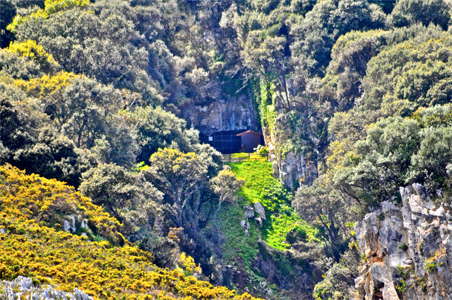
An excellent photo of Cueva del Pindal from a vantage point some distance away, showing the position of its entranceway in the corner of a steep cliff face.
Photo: DelValleObeso via Panoramio

Location of Cueva del Pindal.
Photo: Google Maps

Cueva del Pindal from above.
Photo: Google Earth
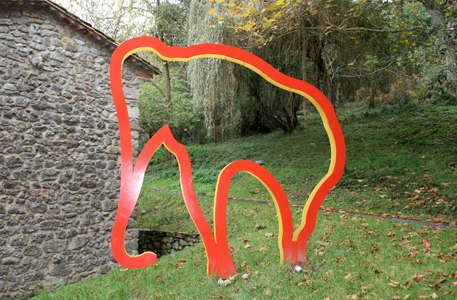
Cueva del Pindal Tourist Office.
This outline of a mammoth is the same as the famous one deep in the cave which has what looks like a heart painted on it.
The sculpture is similar to that erected outside Rouffignac Cave in France.
Photo: Carolyn Hailstones 2008

From the information kiosk, the track to Cueva del Pindal passes along a treed limestone escarpment.
Photo: Carolyn Hailstones 2008

The track through the forest has many outcrops of the limestone of which the cave and the whole area is composed.
Photo: Carolyn Hailstones 2008

Eventually the track descends down this staircase to the flat area in front of the cave entrance.
Most of the safety railings beside the track are constructed in this way.
Photo: Carolyn Hailstones 2008
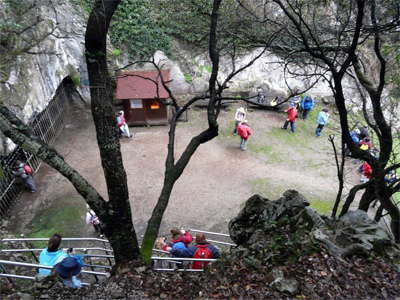
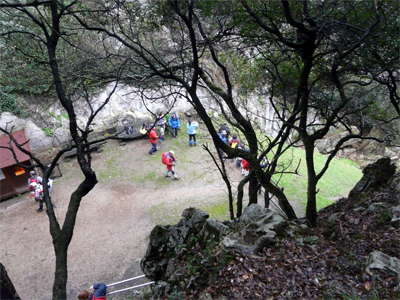
Cueva del Pindal from the top of the staircase, showing the small flat area in front of the cave, with the sea to the right.
Photo: Iván García Fernández via Picasaweb

Cueva del Pindal entrance.
Photo: Nimba
Permission: GNU Free Documentation License , Version 1.2

Looking the other way across the flat area in front of the cave, we can see the vista that the original inhabitants saw - although at that time the sea was a few kilometres further away, since during the ice ages, sea level dropped by about 120 metres because of all the water locked up in snow and ice at the poles.
Photo: Carolyn Hailstones 2008
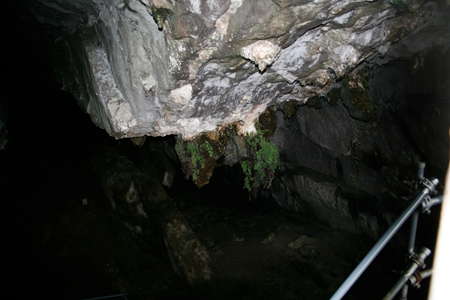
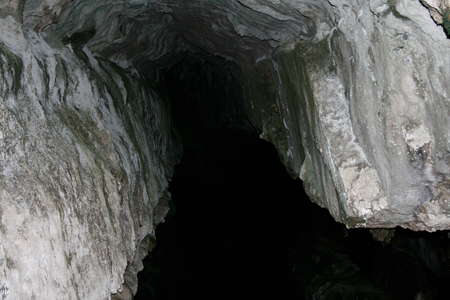
The cave was not open to tourists at the time of Ms Hailstone's visit, and these photos were taken through the bars of the entrance.
The bars provide good ventilation to ensure the conditions inside the cave remain as close to historical levels as possible, with minimal deterioration of the paintings and walls.
Photo: Carolyn Hailstones 2008
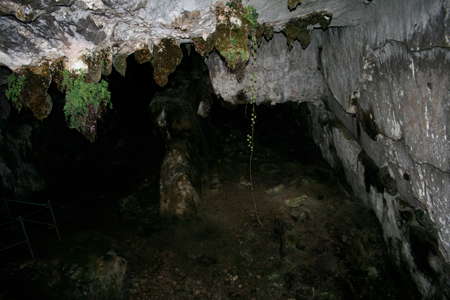
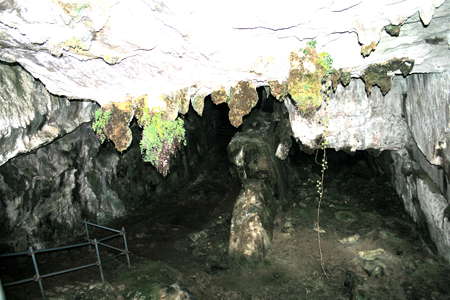
From the entrance, the path descends to the cave floor. The cave is approximately 300 metres long.
Photo: Carolyn Hailstones 2008
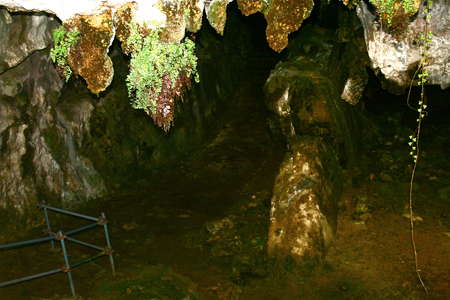
It is only at the entrance that there is enough light to support ferns and other similar vegetation adapted to high moisture levels and low light.
Photo: Carolyn Hailstones 2008
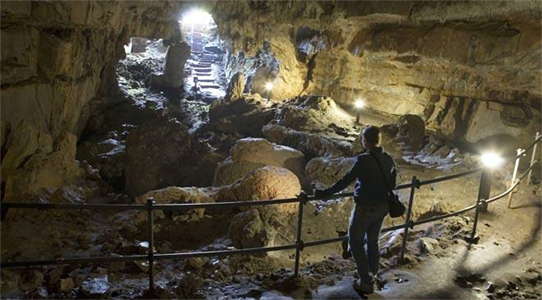
Further inside the Cueva del Pindal we can see the general undulating and rough nature of much of the cave floor.
Photo: http://www.spainisculture.com/en/monumentos/asturias/cueva_del_pindal.html

Cueva del Pindal plan, and indication of the positions of the art works.
Photo: http://www.ctv.es/USERS/pimiango/mapacuev.htm
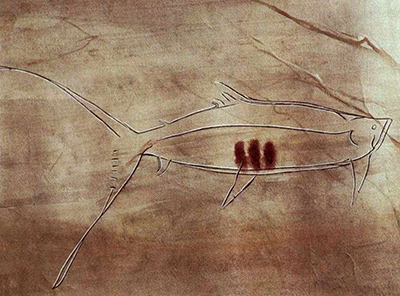
Engraving showing a fish with three red spots inside.
Bahn et al. (1997) say that it has the fins and tail of a tuna, and the body of a salmonid (salmon or trout).
(the tail appears to be of a deep sea fish to me, the closest I can come to identifying it is some sort of Atlantic Tuna. However, there are coastal tunas, Euthynnus sp.
If it is a hybrid representation, the fins of the body and the body itself are much closer to a salmonid than a tuna (see below), though the tail is tuna-like, perhaps exaggerated in length and spread. My hypothesis is that the artist was very familiar with trout and/or salmon, but had seen a tuna, was impressed by the tail, and did the engraving from memory, exaggerating the tail. In any case, it is a superb artistic effort, demonstrating real talent. There is not a wasted line in the whole thing - Don )
Photo: Berenguer (1994)

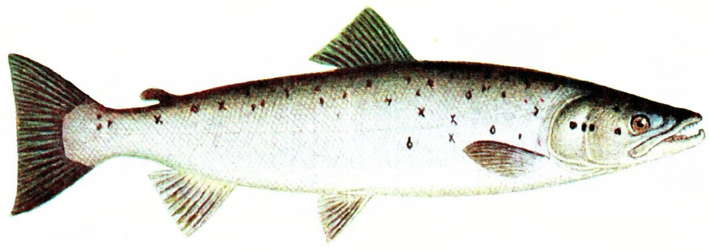
Photos of:
(above) Euthynnus affinis the kawakawa, little or mackerel tuna or false albacore,
(below) an Atlantic salmon Salmo salar.
Photo: (above) Robbie Cada, public domain.
Photo: (below) Iduns kokbok, public domain.
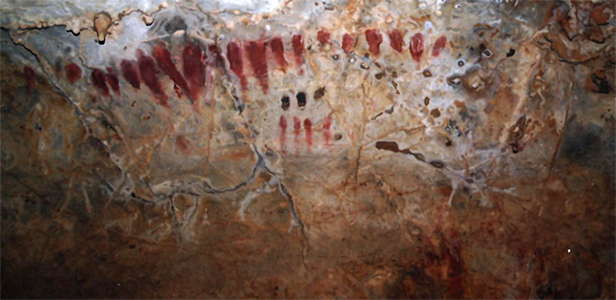
Red signs at the panel containing the engraved fish.
Photo: http://www.asturnatura.com/turismo/cueva-del-pindal/1156.html
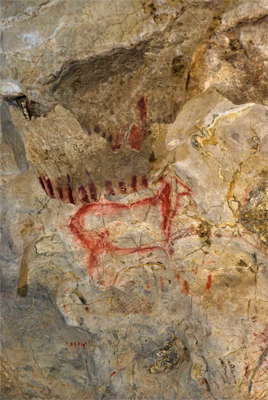
Hind and red marks at Cueva del Pindal.
Photo: http://mensulaediciones.wordpress.com/category/patrimonio-mundial/page/2/, originally from Pumariega (2011)
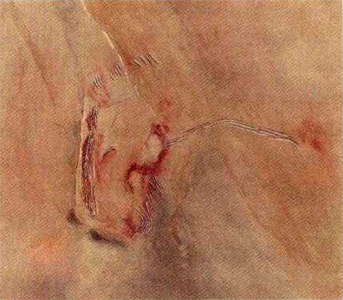
Horse head engraved and painted in red.
Photo: Berenguer (1994)
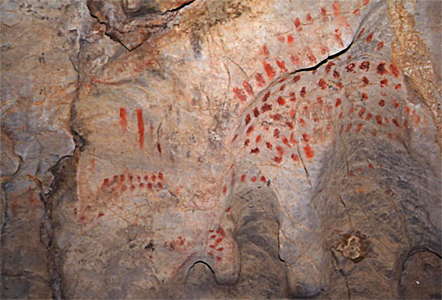
Red dots.
Photo: http://www.asturnatura.com/turismo/cueva-del-pindal/1156.html
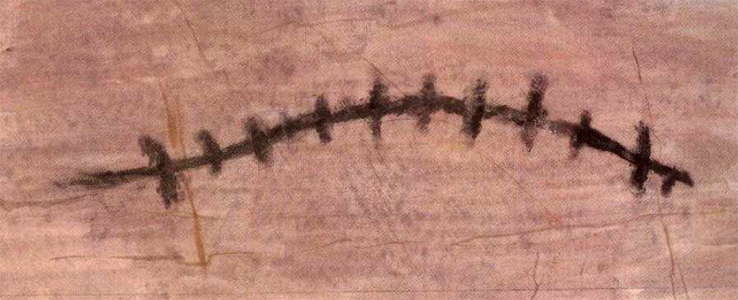
Two enigmatic signs, one a branch shape, the other looking like a railway track!
Photo: Berenguer (1994)
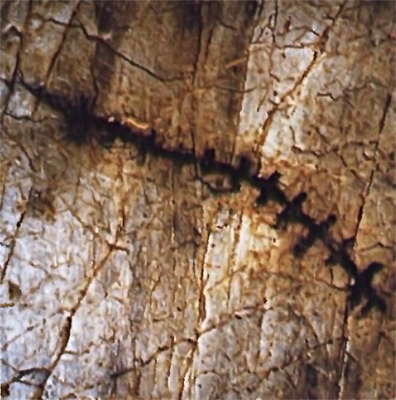
A photo of the ladder or track shape.
Photo: http://www.asturnatura.com/turismo/cueva-del-pindal/1156.html


Cueva del Pindal representation of a hind.
Photo: (left) http://www.olanorte.com/lugares/asturias/ribadedeva/cueva-de-el-pindal/
Photo: (right) http://www.spainisculture.com/en/monumentos/asturias/cueva_del_pindal.html

Red hind, another version. Note that the red stripes on an overhanging rock are out of frame in this view.
Photo: http://www.asturnatura.com/turismo/cueva-del-pindal/1156.html
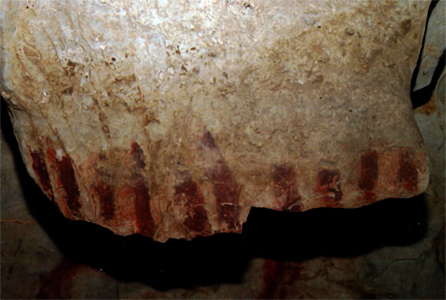
Red stripes on a rock which overhangs the image of the red hind.
Photo: http://www.asturnatura.com/turismo/cueva-del-pindal/1156.html
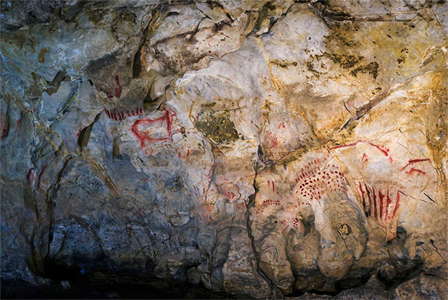
Main panel at Cueva del Pindal.
Photo: http://mensulaediciones.wordpress.com/category/patrimonio-mundial/page/2/, originally from Pumariega (2011)
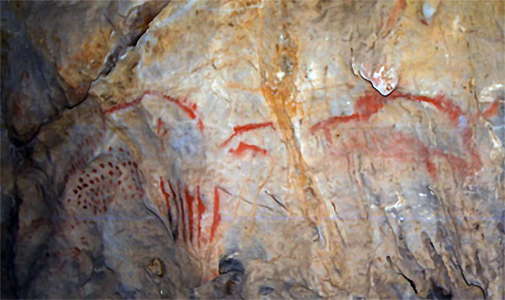
Dots, claviform (club shaped) signs, bison and horse on the main panel.
Photo: http://www.asturnatura.com/turismo/cueva-del-pindal/1156.html
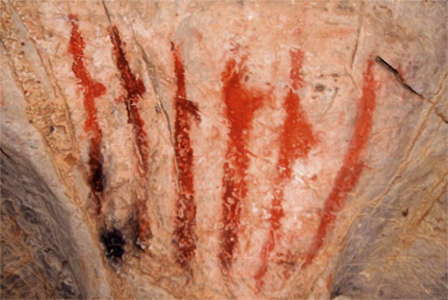
Claviform (club shaped) signs. These signs occur in many painted caves, and their meaning is unknown.
Photo: http://www.asturnatura.com/turismo/cueva-del-pindal/1156.html
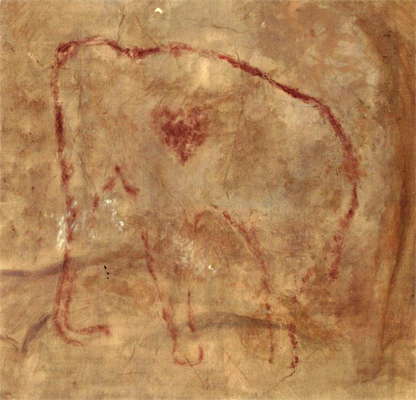
Mammoth painted in red with what appears to be a heart, painted in the same colour, at the left shoulder.
Photo: Berenguer (1994)

Mammoth with a red patch at the shoulder.
Photo: http://www.asturnatura.com/turismo/cueva-del-pindal/1156.html

Mammoth from El Pindal sketched by Abbé Breuil, who wrote the first book on the cave.

Large size engraving of a bison, with what appears to be an axe painted in red at the right shoulder.
Photo: Berenguer (1994)
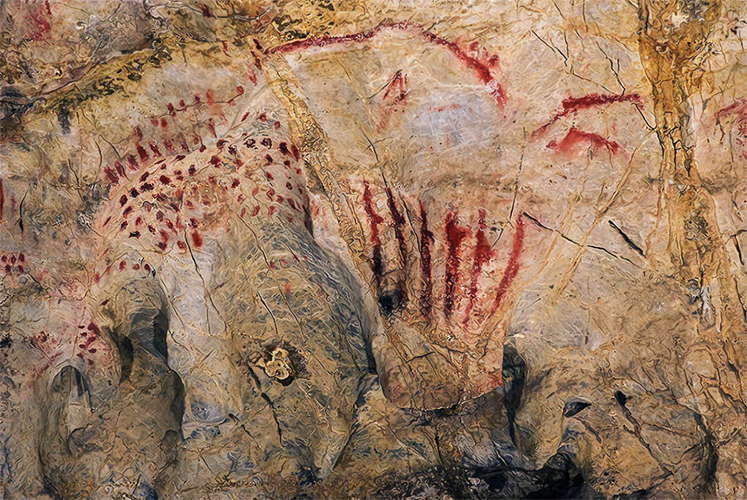
Red claviforms (paintings shaped like a club) and dots at Cueva del Pindal.
Photo: http://mensulaediciones.wordpress.com/category/patrimonio-mundial/page/2/, originally from Pumariega (2011)
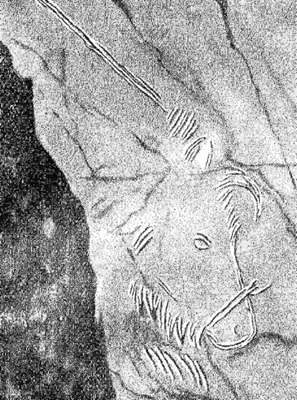
Engraved horse head at the main panel with what appears to be either a halter or some binding on the muzzle of the horse.
Note also that this is an illustration from a book, but no source is given.
Photo: http://www.asturnatura.com/turismo/cueva-del-pindal/1156.html

Painting in black showing two bucks and engravings of two horses.
Photo: Berenguer (1994)
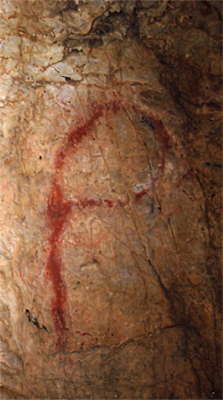
Red sign at the start of the main panel in the cave.
Photo: http://www.asturnatura.com/turismo/cueva-del-pindal/1156.html
References
- Bahn, P., Vertut, J., 1997: Journey Through the Ice Age, London, 1997.
- Berenguer, M., 1994: Prehistoric cave art in Northern Spain, Asturias,Cuidad de Mexico: Frente de Afirmacion Hispanista.
- Pumariega, M., 2011: La cueva de El Pindal 1911-2011, Estudio de su arte rupestre cien años después de Les cavernes de la région cantabrique, Ménsula Ediciones, SL 1ª edición, Pola de Siero, 2011. 212 p.
Back to Don's Maps
 Back to Archaeological Sites
Back to Archaeological Sites
